Engineering Mechanics - PKRB: Impulse and Momentum
- PKRB: Impulse and Momentum - General Questions
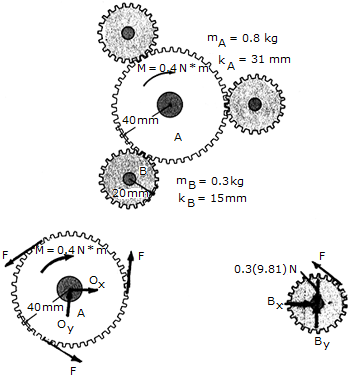
A constant torque or twist of M = 0.4N • m is applied to the center gear A. If the system starts from rest, determine the angular velocity of each of the three (equal) smaller gears in 3 s. The smaller gears (B) are pinned at their centers, and the mass and centroidal radii of gyration of the gears are given in the figure.
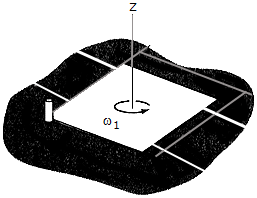
The square plate, where a = 0.75 ft, has a weight of 4 lb and is rotating on the smooth surface with a constant angular velocity of  1 = 10 rad/s. Determine the new angular velocity of the plate just after its corner strikes the peg P and the plate to rotate about P without rebounding.
1 = 10 rad/s. Determine the new angular velocity of the plate just after its corner strikes the peg P and the plate to rotate about P without rebounding.
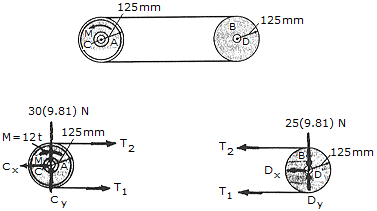
The flywheel A has a mass of 30 kg and a radius of gyration of kc = 95 mm. Disk B has a mass of 25 kg, is pinned at D, and is coupled to the flywheel using a belt which is subjected to a tension such that it does not slip at its contacting surfaces. If a motor supplies a counter-clockwise torque or twist to the flywheel, having a magnitude of M = (12t) N • m, where t is measured in seconds, determine the angular velocity of the disk 3 s after the motor is turned on. Initially, the flywheel is at rest.
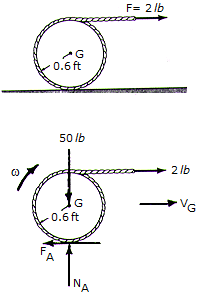
A cord of negligible mass is wrapped around the outer surface of the 50-lb cylinder and its end is subjected to a constant horizontal force of P = 2 lb. If the cylinder rolls without slipping at A, determine its angular velocity in 4 s starting from rest. Neglect the thickness of the cord.
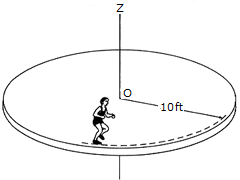
A horizontal circular platform has a weight of 300 lb and a radius of gyration about the z axis passing through its center O of kz = 8 ft. The platform is free to rotate about the z axis and is initially at rest. A man, having a weight of 150 lb, begins to run along the edge in a circular path of radius 10 ft. If he has a speed of 4 ft/s and maintains this speed relative to the platform, compute the angular velocity of the platform.